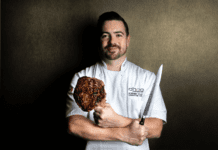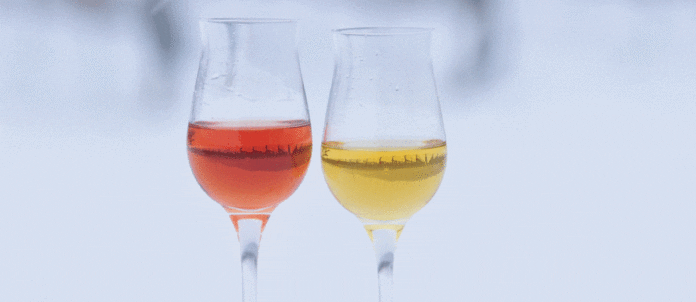Volume 47, Number 10
Written By: Alan McGinty
[dropcap size=big]G[/dropcap]ermany has been making icewine since the 1790s, but today the number-1 producer of icewine is Canada, according to Seattle’s Wine Economist.
Icewine sales in Ontario rose from approximately $25 million in2010 to $34 million in 2013, with about half of sales now exports, according to the Wine Council of Ontario. Sales through The Liquor Control Board of Ontario (LCBO) have been approximately $7 million for each of the past five years, with a slight upward trend, according to Heather MacGregor, media coordinator for the LCBO.
Popular Ontario icewine producers include Inniskillin, Pillitteri Estates Winery, Jackson-Triggs Winery, Reif Estate Winery and Peller Estates. In B.C., look for Gehringer Brothers Estate Winery, Inniskillin Okanagan and Mission Hill.
But, the icewine of choice is Vidal, which accounts for 78 per cent of the category’s sales at the LCBO. Vidal is a hybrid grape with a thicker skin that protects it through the long “hang time” needed to get to the first night of harvesting at -8°C — a time when the water in the grape is frozen, save for the drop of concentrated juice used to create the dessert wine.
While Vidal and the more refined Riesling icewines, with their aromas of tropical fruit, honey and raisin, dominate current sales, Cabernet Sauvignon, Sauvignon Blanc and Cabernet Franc icewines are growth leaders on a percentage basis, notes MacGregor. Meanwhile, red icewines are a relatively new category, offering flavours of raspberry and strawberry.
But whatever the grape, it’s clear the rich wine is ripe for promotion. In fact, Niagara, Ont.’s acclaimed Peller Estates Winery Restaurant holds an icewinemakers’ dinner, which begins with icewine martinis, followed by multiple courses and icewine-infused marshmallows toasted on an open fire for dessert — all for $150 per person.
An expensive icewinemakers’ dinner may not be an option for all foodservice operators, so Jason Parsons, executive chef at the Peller Estates Winery Restaurant, suggests merchandising icewine by offering pairings. “Icewine works with a cheese plate. Go with a blue cheese or other rich cheeses,” he says, adding that he has paired icewine with savoury appetizers — one surprise was spicy tuna tartare. “It sounded disgusting as a pairing with icewine,” he admits. “Ingredients included basil, fig, cinnamon and chili. It turned out to work incredibly well with a crisply acidic Riesling icewine.”
Indeed, offering unusual pairings is a good way to market the sweet, expensive niche product, which isn’t often top of mind among diners. “Last Valentine’s Day we offered a dinner with wine pairings,” recalls Fabien Ramirez, manager and sommelier at the Art Gallery of Ontario’s Frank restaurant in Toronto. “Dessert was a chocolate truffle with a little icewine inside it. We served it with icewine and gave guests three truffles each to take home. It was a big hit.” He adds: “We always include a fruit compote with our cheese plates, and icewine really works with that.” The key to selling the golden elixir? “Point out that it’s unique, high quality and internationally recognized,” Ramirez advises.

















